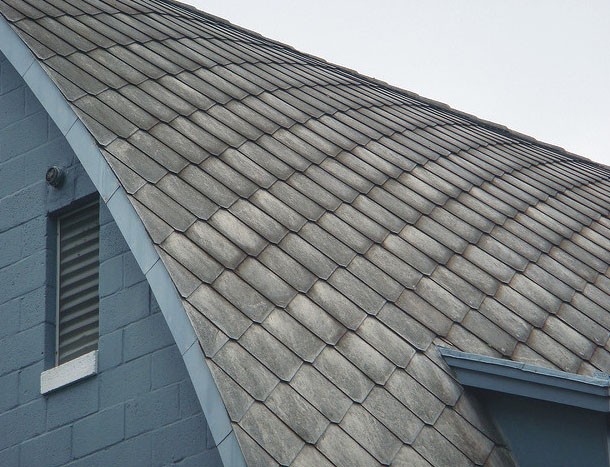Before starting a construction project it is important to be aware of hazardous construction materials that could negatively affect your health. Some of the toxic construction materials have been banned, but are still in use.
We look at the 7 most toxic construction materials you need to know and their health implications:
1.Asbestos
Although certain uses of asbestos have been banned, some countries continue to import raw asbestos for use in roofing materials, coatings and compounds, plastics and other applications. Other finished asbestos-containing products that continue to be imported include drywall, floor tiles, and similar building materials.
Health implications: According to health experts, exposure to even a small quantity of asbestos during construction, repairs, demolition, modification or maintenance — can cause serious health issues like asbestosis, mesothelioma, lung cancer, etc. In fact, asbestos is often linked to one of the most pernicious forms of cancer.
2.Lead
Lead is one of the most hazardous construction materials being used today. In addition to paints and varnishes, lead-containing building materials can include window glazing putty; batteries for lighting, exit signs, and security systems; solders and pipes; mortar; acoustic materials; flashing; plastic coloring (wiring and blinds); and ceramic glazes.
Health implications: Doctors reckon that Lead has the potential to damage the central nervous system, cardiovascular system, hematological system, kidneys and reproductive system.
3.Mercury
Mercury is used in many types of equipment and devices including batteries (smoke detectors, emergency lighting systems, elevator control panels, etc.); lighting (fluorescent and high intensity discharge lamps and “silent” wall switches); heating, ventilating, and air conditioning (HVAC) systems (thermostats, fire stats, manometers, thermometers); and switches (sump pumps, pneumatic controls).
Health Implications: As a bioaccumulative, persistent, toxic substance, mercury threatens the health of humans and wildlife.
4.Polychlorinated Biphenyls (PCBs)
PCBs are mixtures of synthetic organic chemicals that are non-flammable, chemically stable and have high boiling points and good chemical insulating properties. They were used in hundreds of industrial and commercial applications including electrical, heat transfer, and hydraulic equipment; as plasticizers in paint, plastics and rubber products; and in pigments, dyes and carbonless copy paper.
Health Implications: PCBs have been demonstrated to cause a variety of adverse health effects. They have been shown to cause cancer in animals as well as a number of serious non-cancer health effects in animals, including: effects on the immune system, reproductive system, nervous system, endocrine system and other health effects
5.Perfluorinated Compounds (PFCs)
PFCs are stain, water and grease repellent chemicals found in a wide range of consumer products. These are used to make stain, heat and water-resistant products including fire protection agents, floor polishes and paints. In addition, these are also used to manufacture non-stick coatings.
Health implications: High exposures to PFCs has been associated with pre-eclampsia (pregnancy-induced hypertension), birth defects (PFOA only), and increased uric acid levels – a marker of heart disease.
6.Formaldehyde
Formaldehyde is used widely to manufacture building materials and numerous household products. It is also a by-product of combustion and certain other natural processes. Thus, it may be present in substantial concentrations both indoors and outdoors. In homes, the most significant sources of formaldehyde are likely to be pressed wood products made using adhesives that contain urea-formaldehyde (UF) resins.
Health implications: Formaldehyde, a colorless, pungent-smelling gas, is a known respiratory irritant and carcinogen. It can cause watery eyes, burning sensations in the eyes and throat, nausea, and difficulty in breathing in some humans exposed at elevated levels (above 0.1 parts per million).
7.Phthalates
Phthalates, called “plasticizers,” are a group of industrial chemicals used to make plastics like polyvinyl chloride (PVC) more flexible or resilient. Building materials are the largest end use for PVC. Major uses of flexible PVC in buildings include carpet backing, resilient flooring, wall coverings, acoustical ceiling surfaces, upholstery textiles, roof membranes, waterproofing membranes, and electrical cord insulation. Phthalates are nearly ubiquitous in modern society, and can also be found in toys, food packaging, hoses, raincoats, shower curtains, vinyl flooring, adhesives, detergents, hair spray, and shampoo.
Health implications: Certain phthalates are known or suspected endocrine disruptors, meaning they impact and alter the human hormone system. Phthalates are also suspected to be potent reproductive toxins, especially in boys.
Also Read
7 countries grappling with huge housing deficit in Africa
Faucets 101: 5 Things Builders Need To Know

